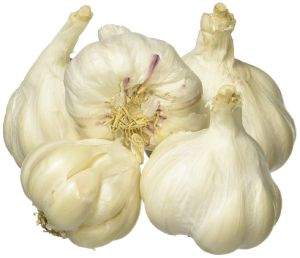
Fresh Organic Garlic
Get Price Quote

Cloves
Get Price Quote
An Introduction Clove, (syzygium aromaticum, syn. eugenia aromaticum or eugenia caryophyllata), is one of the oldest spices in the world. This dried, unopened flower bud of a small evergreen tree is widely used as an ingredient of a variety of beverages, food specialties, medicines, cosmetics, perfumery and toiletries.The word ‘clove’ originates from the Latin word – clavus, which means ‘nail’, as its buds resemble small irregular nails in shape. Clove is a native to the North Moluccas, the Spice Islands of Indonesia and is widely cultivated in Brazil, the West Indies, Mauritius, Madagascar, India, Sri Lanka, Zanzibar and Pemba. Indonesia is the largest producer of cloves in the world followed by Madagascar and Tanzania. Cloves in other Languages French: Clou de girofle German: Gewuzenelke Italian: Chiodo di garofano Spanish: Clavo de especia Burmese: Ley-nyin-bwint Chinese: Ding heung Indian: Lao(o)ng, laung lavang, lavungam Thai: Gahn plu History of Coves in a Nutshell In ancient times, the cultivation of cloves were restricted to the regions of the Maluku Islands (historically called the Spice Islands), including Bacan, Makian, Moti, Ternate, and Tidore Before Christ, they were introduced in West to the Middle East and Europe In Syria, archaeologists found cloves within a ceramic vessel belonging to 1721 BC The Chinese wrote of cloves as early as 400 BC A record from 200 BC contained description about courtiers keeping cloves in their mouths to avoid offending the emperor while addressing him Cloves, along with nutmeg and pepper, were highly prized in Roman times They were traded by Arabs during the Middle Ages in the profitable Indian Ocean trade In the late fifteenth century, the Portuguese brought large quantities of cloves to Europe, mainly from the Maluku Islands In the seventeenth century, clove trade was dominated by the Dutch In 1770, the French succeeded in introducing the clove tree into Mauritius, though with a great difficulty Later, clove cultivation was introduced into Guiana, Brazil, most of the West Indies, and Zanzibar, where the majority of cloves are grown today In Britain, during the seventeenth and eighteenth centuries, cloves were worth at least their weight in gold, due to the high price of importing them. Clove Plant Description The clove is an evergreen tree from the Myrtaceae family and grows well in rich loamy soils of the humid tropics. It grows to a height ranging from 10-20 m, having upright branches with shiny / leathery leaves and crimson flowers in numerous groups of terminal clusters. The flower buds are at first, of a pale color and gradually become green, after which they develop into a bright red, when they are ready for collecting. Cloves are harvested when they grow 1.5-2 cm long, and consist of a long calyx, terminating in four spreading sepals, and four unopened petals which form a small ball in the centre. Clove Compounds ‘Eugenol’, is the main ingredient which is responsible for its sweet and nice aroma. Clove oil contains about 72-90% of eugenol, which hold many antiseptic and anaesthetic properties. Other major constituents are essential oils acetyl eugenol, beta-caryophylline & vanillin; crategolic acid; tannins, gallotannic acid, methyl salicylate (painkiller); the flavanoids eugenin, kaempferol, rhamnetin, and eugenitin; triterpenoids like oleanolic acid, stigmasterol and campesterol; and several sesquiterpenes. Culinary Uses For centuries, cloves have been widely used in cooking, either whole or in a ground form in many popular cuisines of the world. In the north Indian cuisine, it is used in almost every sauce or side dish made, mostly ground up along with other spices. They are also smoked in a type of cigarettes locally known as kretek in Indonesia. In the Chinese and Japanese culture, cloves are an important incense material and is widely used in religious ceremonies. Medicinal Uses of Clove Oil Oil extracted from cloves contain ‘eugenol’ which constitutes about 60-90% of each clove and contains many medicinal properties. This oil also acts as an antiseptic, anesthetic, stimulant (promotes digestion by increasing bile and gastric acid secretions), expectorant, aromatic, antispasmodic, astringent and accounts for its various uses. Cloves have been widely used for curing:
Best Deals from Root Vegetables

Fresh Garlic
Get Price Quote
We are a proficient exporter and supplier of Fresh Garlic based in Nagpur, Maharashtra, India. Garlic has a characteristic taste, flavour and aroma which make it an important part of the kitchen. We procure the product from reputed farms and check against all quality parameters and hygiene level. The Fresh Garlic we deliver has been cultivated organically and forms a good dietary food. We rely on our world class logistic team who deliver the product in time.

Fresh Garlics
10,000 - 11,000 Per Metric Ton
Fresh Garlics, Stearic Acid Granules and Clenbuterol Powder, Palm Oil

Garlic
Get Price Quote
Basmati rice

Garlic
Get Price Quote

Garlic
Get Price Quote